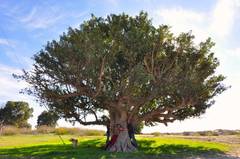Companionship or Death
01/09/2019 03:35:27 PM
 As we approach Tu B’shvat, I am reminded of the story of Honi Hamagil, Honi the Circle-Maker and the carob tree.
As we approach Tu B’shvat, I am reminded of the story of Honi Hamagil, Honi the Circle-Maker and the carob tree.
Honi lived in Israel around the year 100 BCE. He was a shaman and a miracle-worker. He’s called “the Circle-Maker” because in times of drought he would draw a circle, stand in it and refuse to move until God made the rain fall.
One day Honi was journeying on the road and he saw a man planting a carob tree. He asked, “How long does it take for this tree to bear fruit?” The man replied, “Seventy years.”
“Are you certain that you will live another seventy years?” asked Honi.
The man replied, “As my forefathers planted carob trees for me, so I, too, plant these for my children.”
In most tellings, the story ends here, with its lovely and essential message of unselfish living and sustainability. However, in the Talmud, the story continues…
Honi sat down to have a meal and sleep overcame him. As he slept, a rocky formation enclosed him, hiding him from sight, and he slept for seventy years! When he woke, he saw a man gathering the fruit of the carob tree and Honi asked him, “Are you the man who planted the tree?”
“I am his grandson,” replied the man.
“I have slept for seventy years!” Honi exclaimed.
Returning home, Honi asked, “Is the son of Honi the Circle-Maker still alive?” The people answered him, “His son is no more, but his grandson is still living.” Honi then shouted, “I am Honi the Circle-Maker!,” but no one would believe him.
Honi then goes to the beit midrash [study hall] and there he overhears the scholars say, “The law is as clear to us as in the days of Honi the Circle-Maker,” for whenever he came to the beit midrash he would settle any disputes the scholars had.” Whereupon Honi called out, “I am he!” But the scholars would not believe him… Honi was emotionally crushed, prayed for mercy, and died.
From this story another Talmudic sage, named Raba, drew this conclusion: “Either companionship or death.” (Talmud, Ta’anit 23a). Without the connection to his community—the trust and friendship he had known 70 years earlier—Honi’s existence had lost its meaning. He simply couldn’t go on disconnected from the people he knew and loved.
What a story! I love the way the Talmud connects environmental sustainability with emotional well-being. We are all part of a web of being that spans both time and space, the physical and the spiritual.
We harvest from trees planted before we were born; we plant trees so that our children will have something to harvest after we are gone in ways both real and metaphorical. And, as important as these vertical intergenerational connections are, they do not sustain us without the horizontal connections of family, friends, and community.
The Talmud is telling us what we all intuitively know already: we are whole and complete only when we feel connected to those in our community and to the chain of tradition that links past to present to future.
At this season of Tu B’Shvat, may we feel enriched by all we are given by those who have gone before us, even as we nourish the community we have while planting the seeds for future generations.
The inspiration for this blog and a few of the words came from Rabbi Rachel Barenbl at, blogs.com


